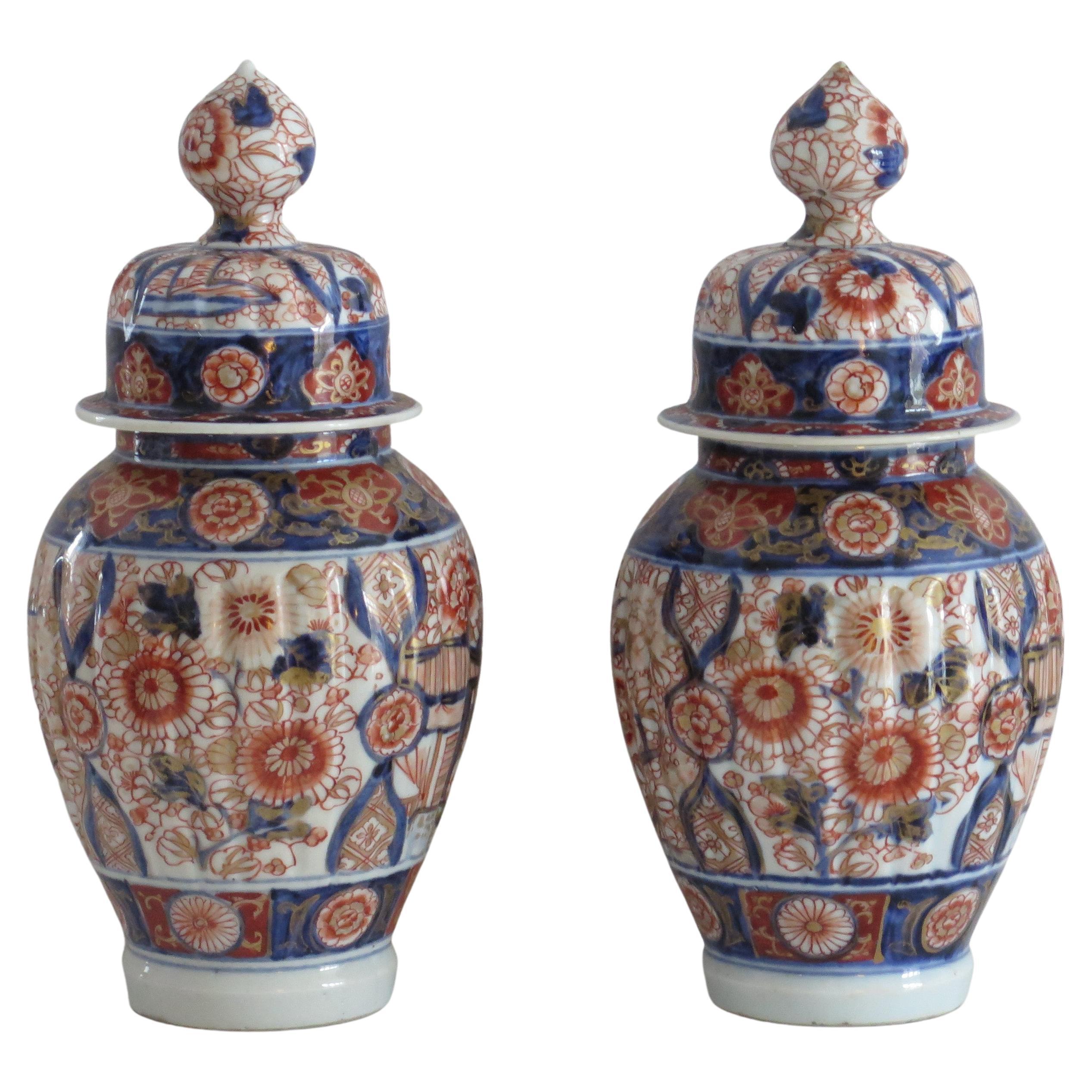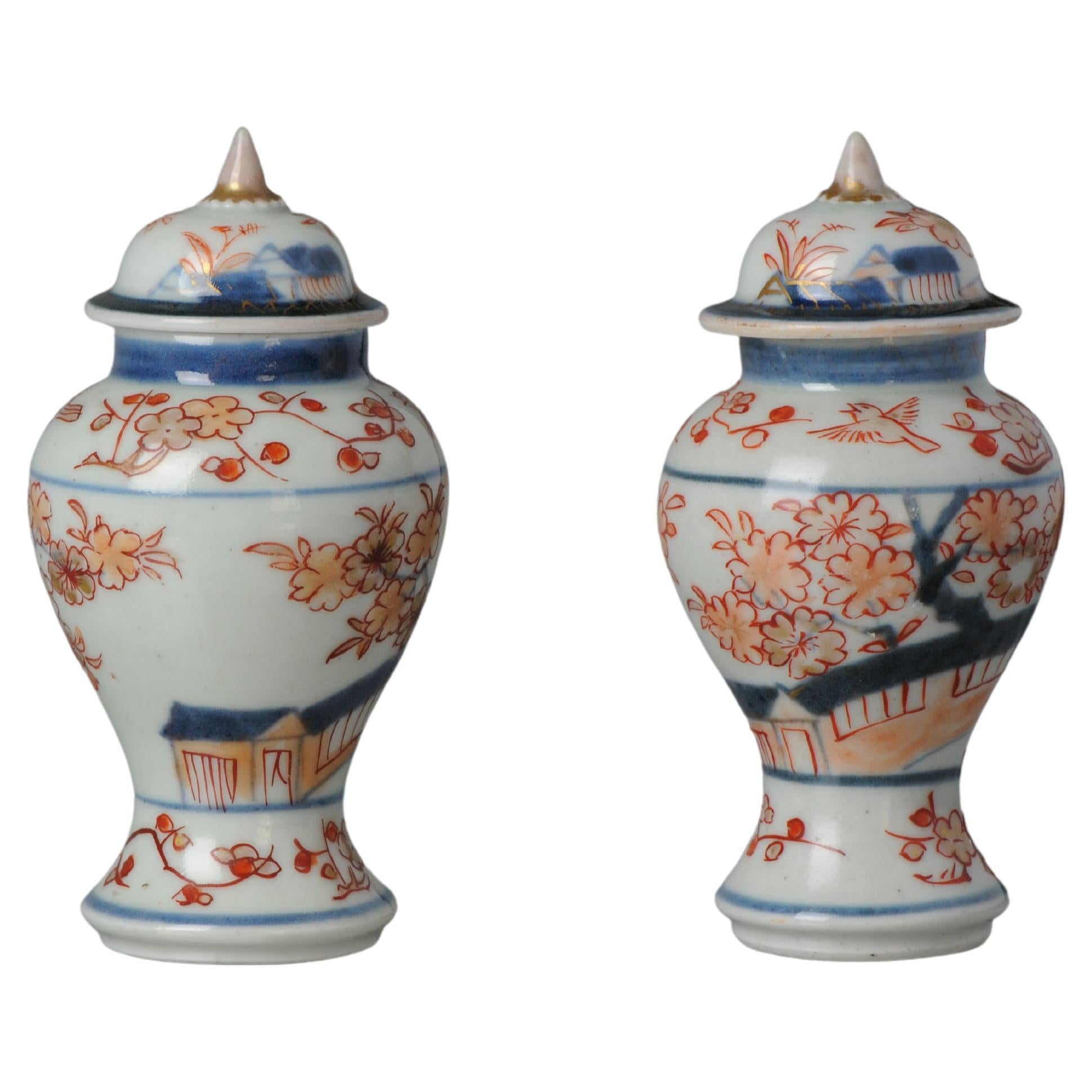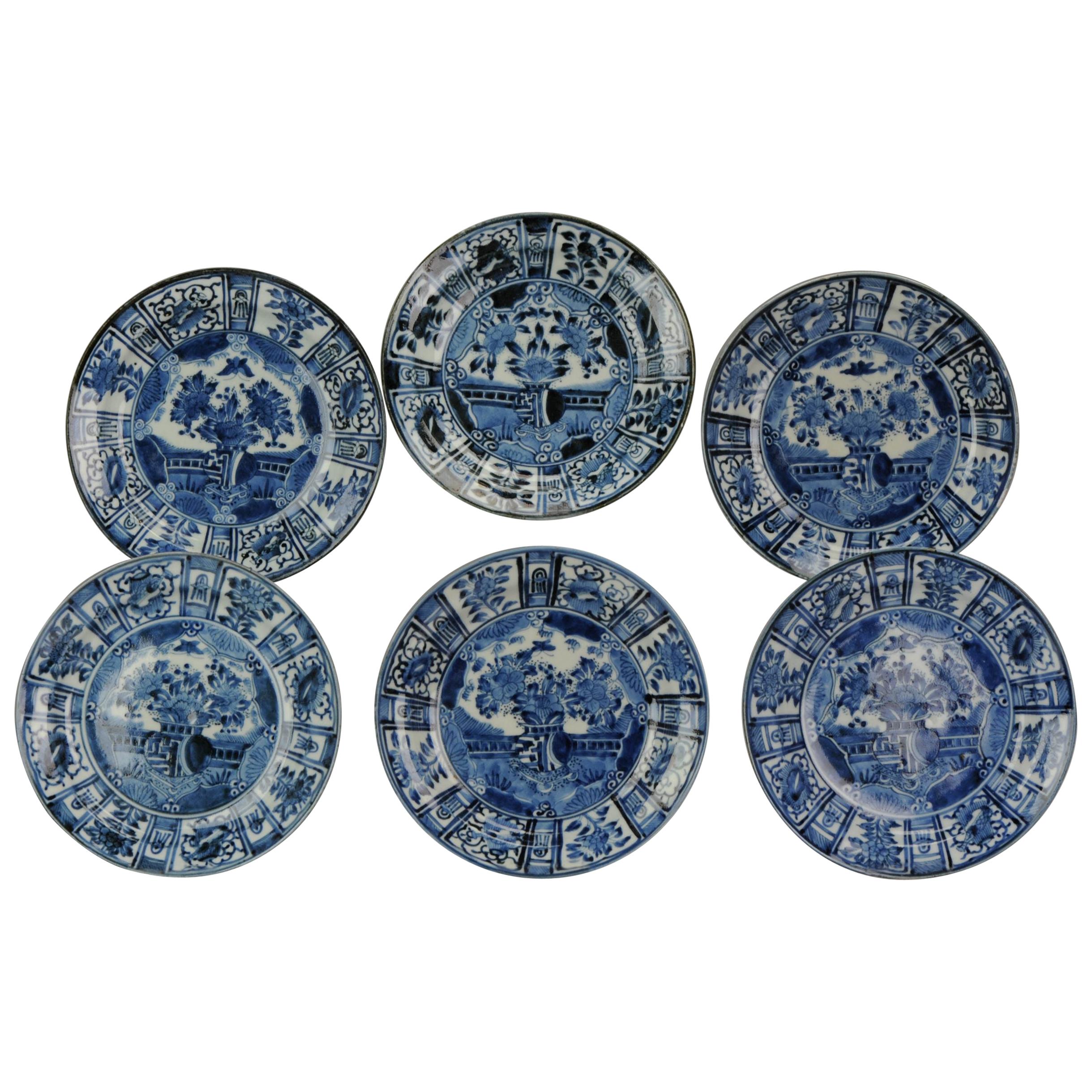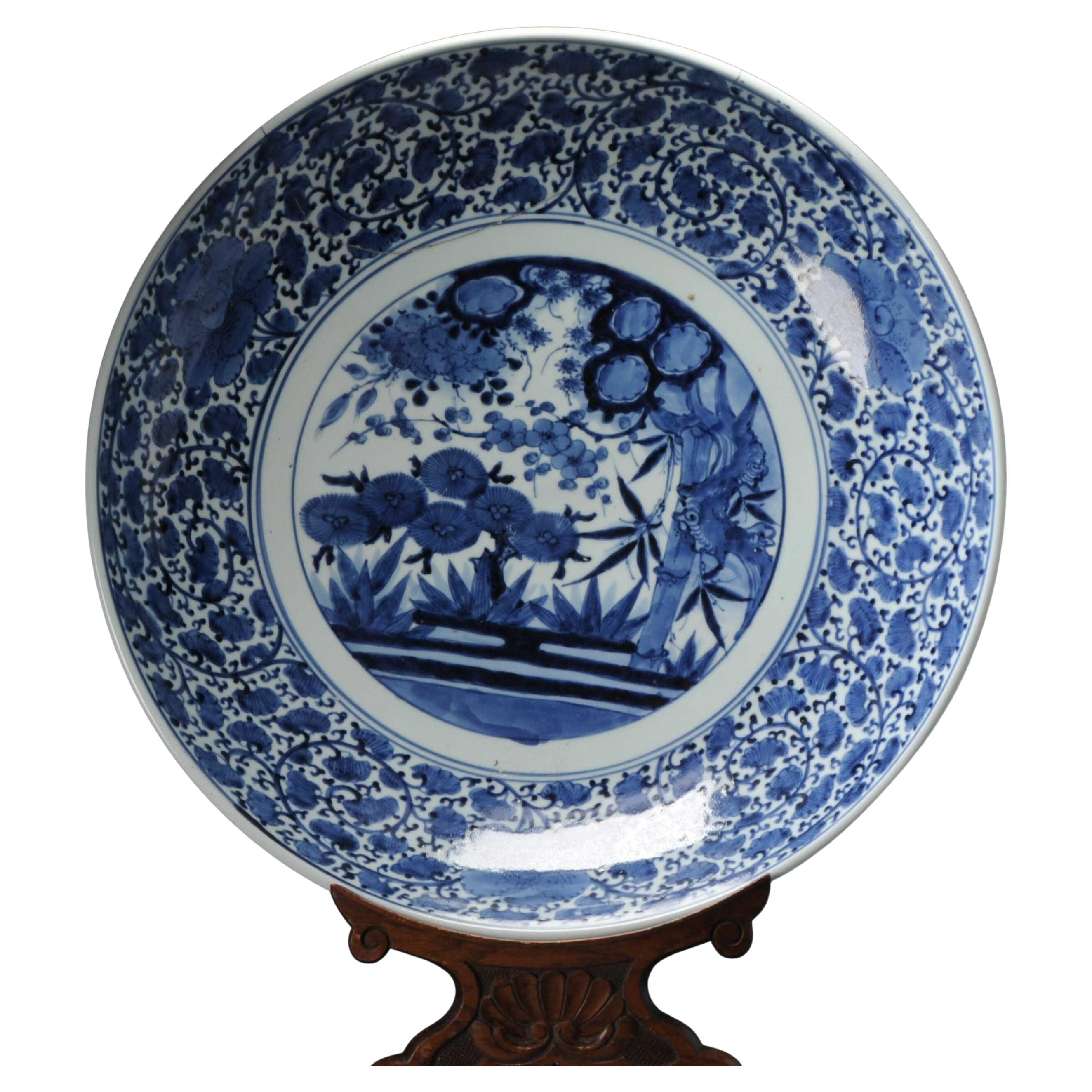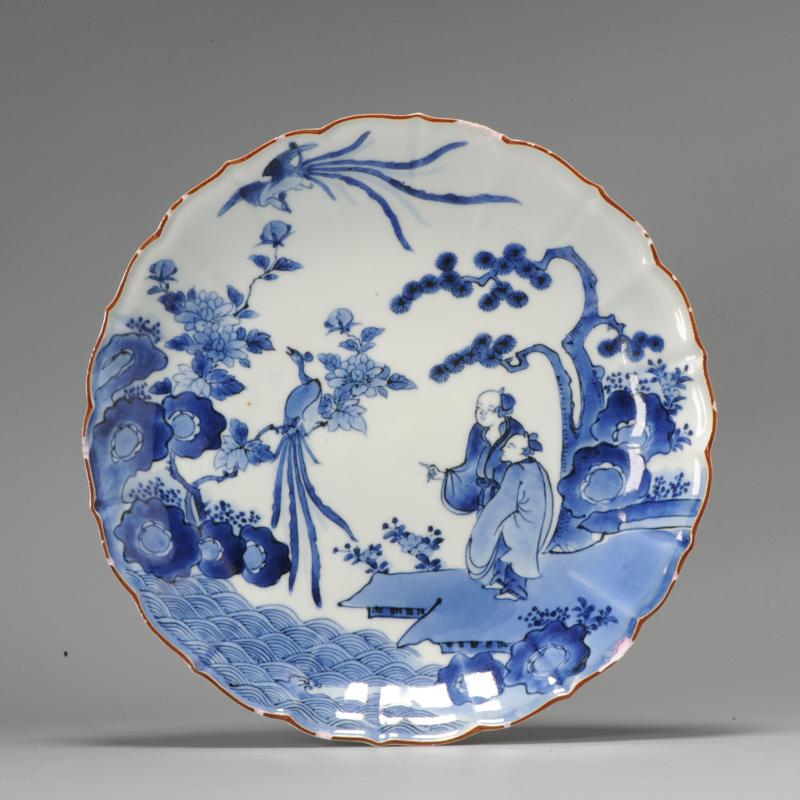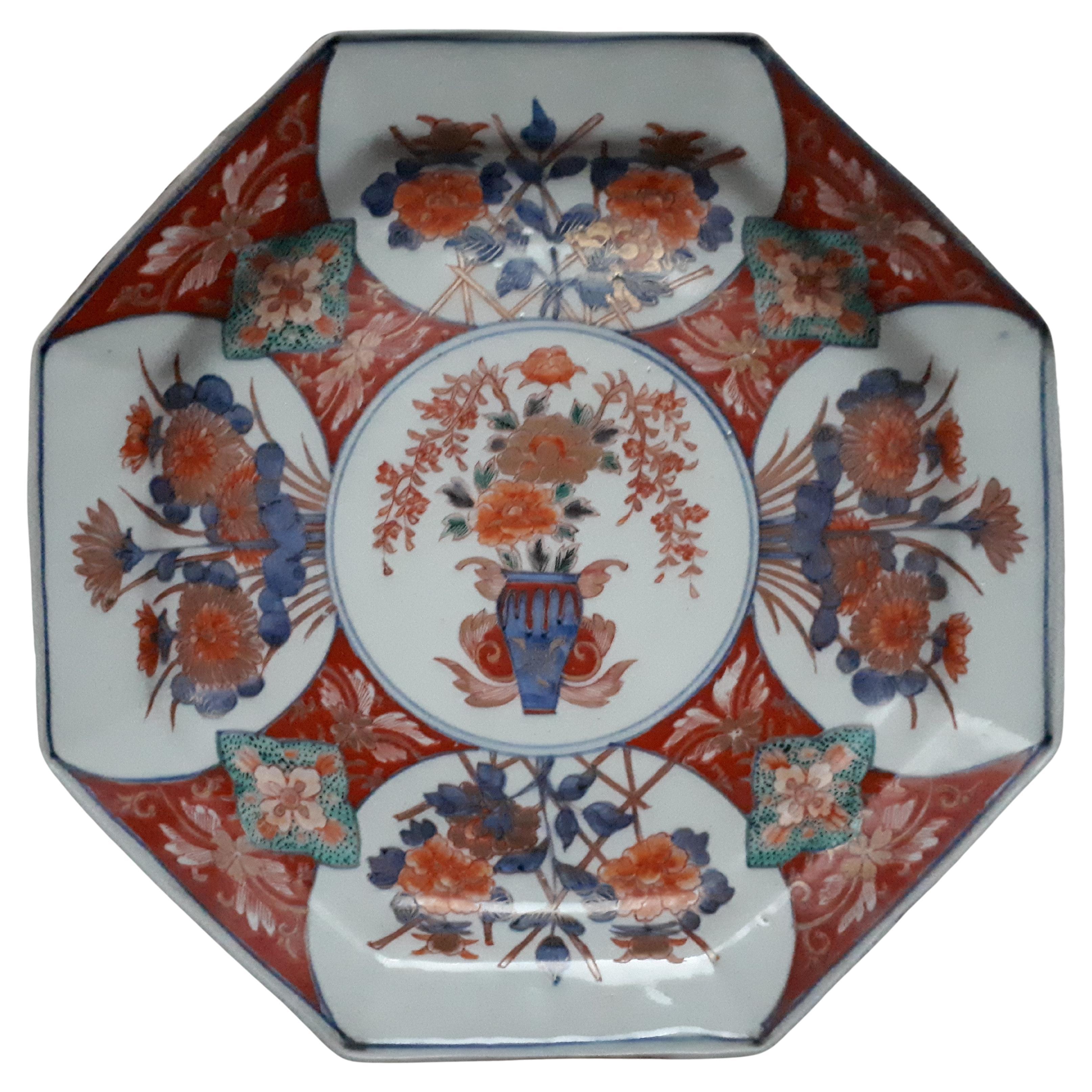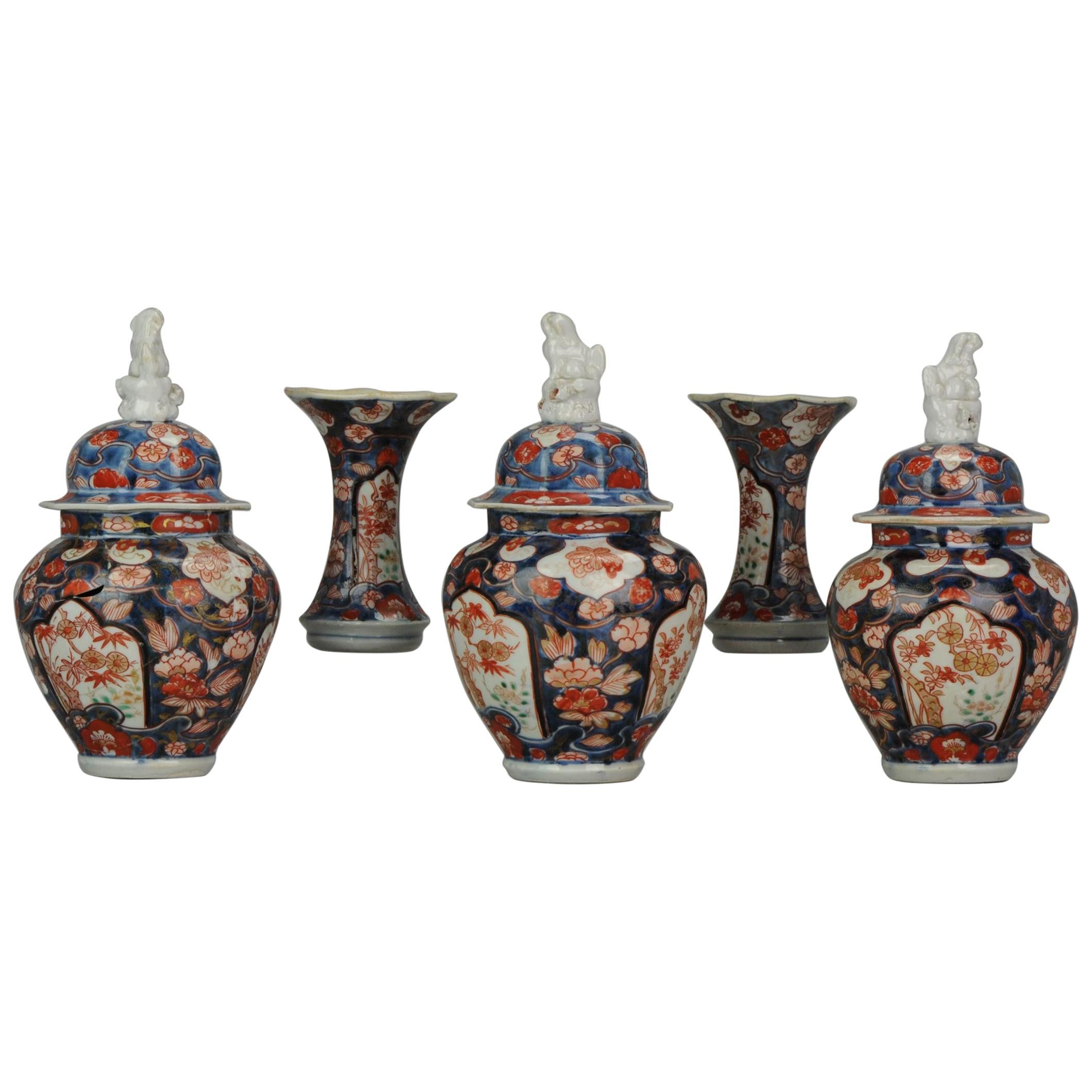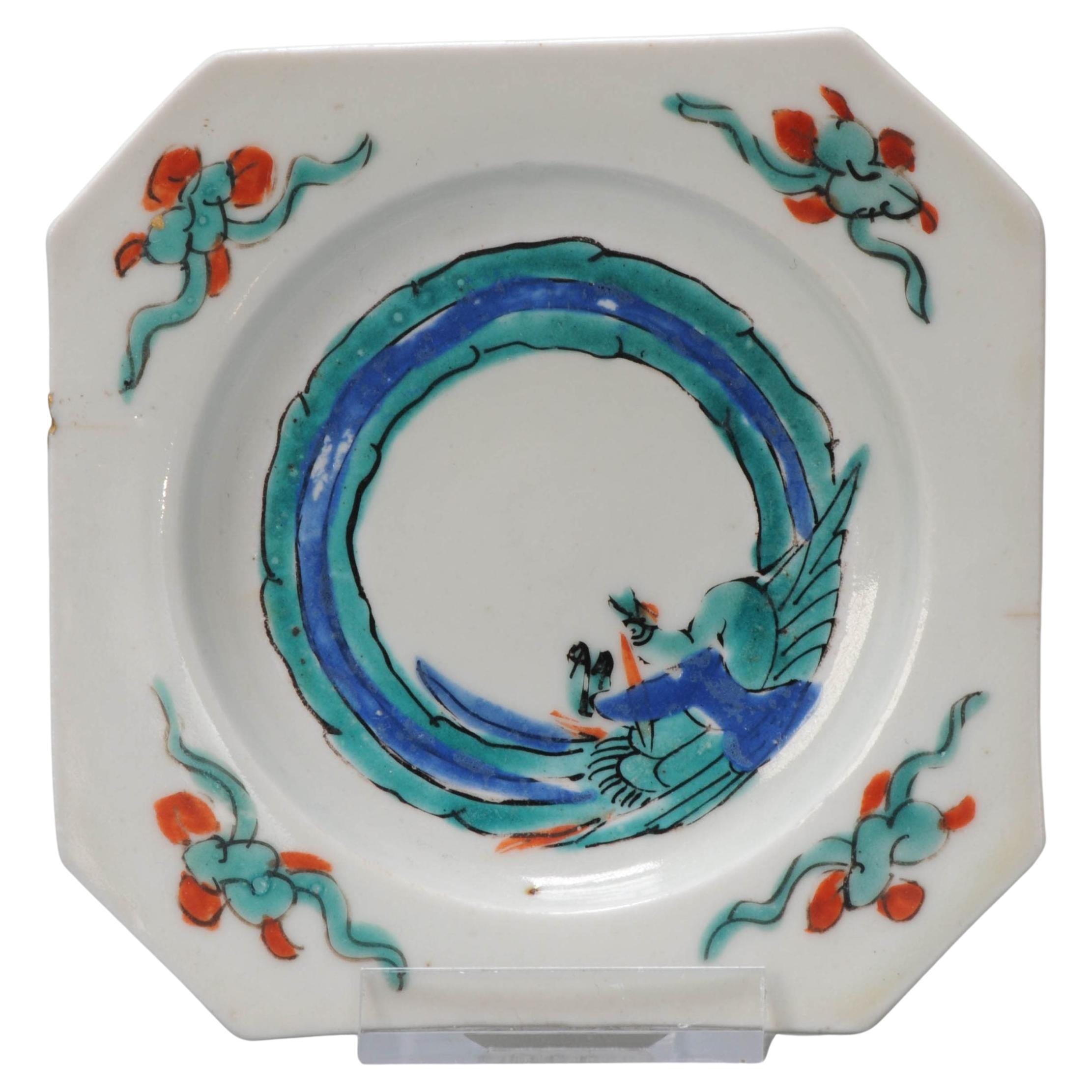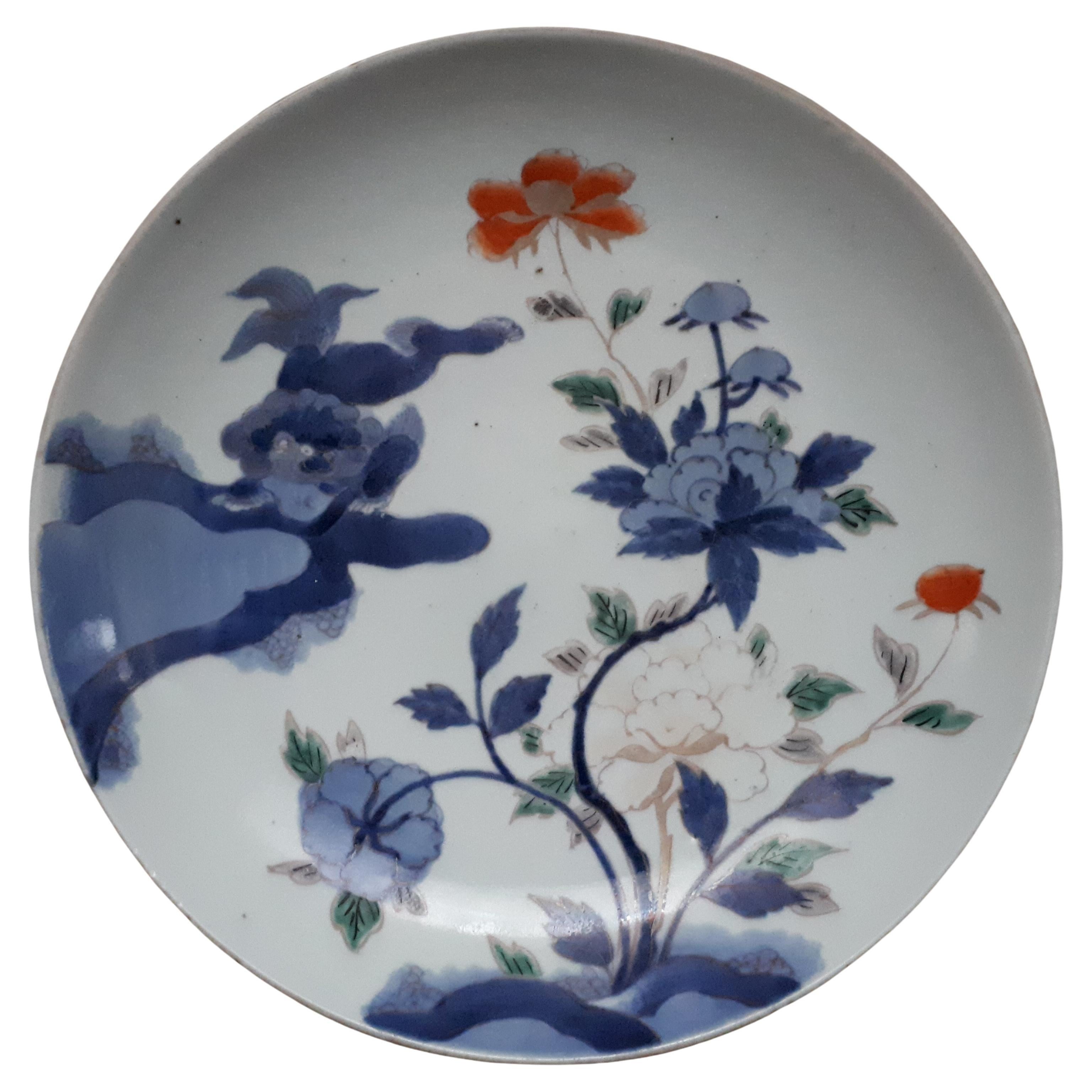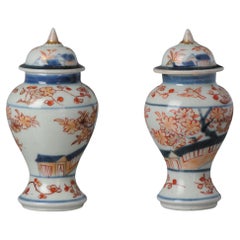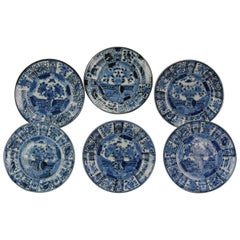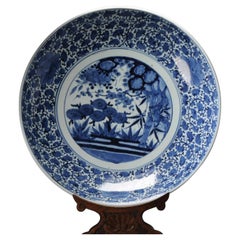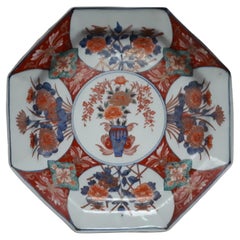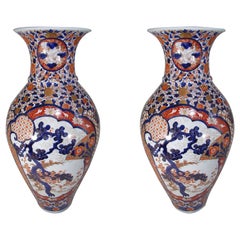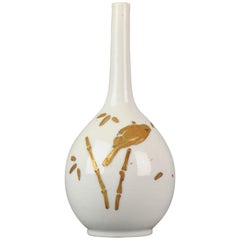
1680-1720 Edo period Japanese Porcelain Gold Lacquer Vase Japan Bird Vase
View Similar Items
Want more images or videos?
Request additional images or videos from the seller
1 of 13
1680-1720 Edo period Japanese Porcelain Gold Lacquer Vase Japan Bird Vase
About the Item
- Dimensions:Height: 9.65 in (24.5 cm)Diameter: 0.04 in (1 mm)
- Style:Edo (Of the Period)
- Materials and Techniques:
- Place of Origin:
- Period:
- Date of Manufacture:1680-1700
- Condition:Wear consistent with age and use.
- Seller Location:Amsterdam, NL
- Reference Number:Seller: 1330917030031stDibs: LU4863215310271
About the Seller
5.0
Gold Seller
These expertly vetted sellers are highly rated and consistently exceed customer expectations.
Established in 2015
1stDibs seller since 2019
158 sales on 1stDibs
Typical response time: 9 hours
More From This SellerView All
- Pair Antique Ca 1680-1720 Japanese Imari Porcelain Vases Arita Edo JapanLocated in Amsterdam, Noord HollandDescription A very nice example of two early Japanese Arita porcelain Lidded Vases teapot with floral, pagode and bird design. Lovely and delicate pair. Condition Overall Cond...Category
Antique 18th Century Japanese Edo Ceramics
MaterialsPorcelain
$876 Sale Price / set20% Off - #6 Antique Japanese Porcelain 1680-1710 Edo Period Kraak Dinner PlatesLocated in Amsterdam, Noord HollandDescription: A very nicely decorated set of 6 arita plates in Kraak wanli style. Top quality A scene of flower basket, peony, chrysanthemum and buddhis...Category
Antique 1690s Chinese Edo Ceramics
MaterialsPorcelain
$3,075 Sale Price / set20% Off - Antique Kraak Edo Period 1680-1690 Japanese Porcelain Huge Charger AritaLocated in Amsterdam, Noord HollandSharing with you this very nice edo period, 1680-1700, example. With a garden floral scene. Marked at base: made in the Hua Qing period of the great Ming Dynasty Arita ware, also known as Arita-yaki, has its origins in 1616, when a Korean farmer, Yi Sam-pyeong, discovered white clay kaolin in Arita and used it to create Japan’s first porcelain. Arita was the first place to produce ceramics in Japan. After the discovery, a number of kilns opened in the area and it soon became a source for Japanese export porcelain...Category
Antique 17th Century Japanese Edo Ceramics
MaterialsPorcelain
$3,372 Sale Price20% Off - Edo Period 1680-1690 Japanese Porcelain Dish Kakiemon Figures Bird Animal FloLocated in Amsterdam, Noord HollandSharing with you this very nice Edo period, 1680-1700, example. With a garden floral scene, figures and birds and a nice brown rim. Marked at base with a Fuku mark. Condition...Category
Antique 18th Century Japanese Qing Ceramics
MaterialsPorcelain
- Antique 18th Century Japanese Garniture Porcelain Vase Imari Edo PeriodLocated in Amsterdam, Noord HollandAmazing set for decorating your home. Interesting foo dogs/lions as handles on the lids. The have small holes in them. Condition: Lids; 2 with restored chip and in some chips ...Category
Antique 18th Century Japanese Edo Ceramics
MaterialsPorcelain
$1,669 Sale Price20% Off - Unusual 1660-1680 Japanese Porcelain Dish Bird Objects KakiemonLocated in Amsterdam, Noord HollandDescription Sharing this lovely little dish from the second half of the 17th century. It is an Early Japanese Enamel Decorated Saucer c.1660-1680. It is sometimes described as early Kakiemon or early Kutani, Dr.Oliver Impey describes this type as “early enamels”. The enamels on this saucer are deeply coloured and thick, the colours are rather striking. Condition 2 small lines and a kintsugi filled chip. Size 100x20mm DiameterxHeight Period 17th century Edo Period...Category
Antique 17th Century Japanese Edo Ceramics
MaterialsPorcelain
$1,316 Sale Price20% Off
You May Also Like
- A Japanese Edo period export porcelain chargerLocated in Lymington, HampshireA large Arita charger of circular form painted in rich cobalt blue under thick glossy glaze with a central vase of thee peony sprays on a platform, the e...Category
Antique Early 1700s Japanese Edo Ceramics
MaterialsPorcelain
- Japanese Arita Porcelain Dish With Imari Vase Decor, Japan Edo PeriodLocated in Saverne, Grand EstArita porcelain dish decorated with a vase and flowers. A tiny chip at 11 o'clock, otherwise excellent condition ! Japan, late 18th century.Category
Antique Late 18th Century Japanese Edo Ceramics
MaterialsPorcelain
- Pair of Edo Period Japanese Blue Red Gold Porcelain Vases, Circa 1800Located in Takarazuka, JPExquisite pair of mid Edo period large Japanese Ko-Imari porcelain vases in an attractive baluster shape boasting intricate patterns of floral and highly detailed geometric motifs that beautifully intertwine on the body of the handsome vases, creating captivating landscapes in dark blue, orange and gold details throughout, which is characteristic of Imari porcelain from the Edo Period. The two scalloped cartouches on each vase with highly decorated and elaborate borders recreate the pine, plum and bamboo motif known as “Sho-Chiku-Bai” or the “Three Friends of Winter.” The impressive pine trees in cobalt blue decorated with gold details dominate the landscape on white background. The two small delicately scalloped cartouches appearing in the middle of the long neck of the vases depict playful rabbits among trees. The late father of the collector of this exquisite pair, who operated one of the leading kilns in the historic Imari-Arita region of Japan, travelled extensively to Europe in the early 1960s with a mission that he led, to purchase and bring back to Japan antique ceramics...Category
Antique Early 19th Century Japanese Edo Vases
MaterialsGold
- Japanese Arita Porcelain Vase with Imari Decoration, Japan Edo PeriodLocated in Saverne, Grand EstImportant vase with gadrooned body in Arita porcelain with blue, coral and gold decoration of flowers in reserves on a background of lattices and foliage. Japan, 18th century.Category
Antique 18th Century Japanese Ceramics
MaterialsPorcelain
- Japanese Arita porcelain dish with peony design, Japan Edo periodLocated in Saverne, Grand EstArita porcelain dish with decoration of a shishi among peonies. Apocryphal Chenghua mark on reverse. Japan, 18th centuryCategory
Antique 18th Century Japanese Edo Ceramics
MaterialsPorcelain
- Pair Japanese Porcelain Lidded Vases Imari Hand Painted, Edo Period circa 1830Located in Lincoln, LincolnshireThese are a high quality pair of very decorative gilded hand enameled Japanese porcelain lidded vases which we date to the Edo period of the 19th century, circa 1830. Each vase has a baluster open necked shape and has been hand painted in an Imari design with varying shades of under-glaze cobalt blue, with over-glaze burnt orange, salmon and grey enamels. The decoration alternates around the central section with many flowers, buildings, fences and other motifs. The quality of the painting is high and there are border designs around the vases and the lids. There are no marks to the base. Overall a very beautiful pair of Japanese vases. Notes: Imari porcelain is the name given to Japanese export porcelain...Category
Antique Early 19th Century Japanese Edo Ceramics
MaterialsPorcelain
Recently Viewed
View AllMore Ways To Browse
Chinese Porcelain Vase 18 Century
Chinese Vases 18century
Meiji Period
Japanese Meiji Period
Meiji Period Japan
Asian Bird
19th Century Chinese Export
Chinese Export 19th
Asia Ceramic
Asian Art Chinese Pair
19th Century Meiji
Japanese Meiji Art
Japanese Wooden Furniture
Chinese Blue White Porcelain
China Blue White Porcelain
China White And Blue Porcelain
Chinese Blue And White Porcelain
Chinese Porcelain Blue And White
